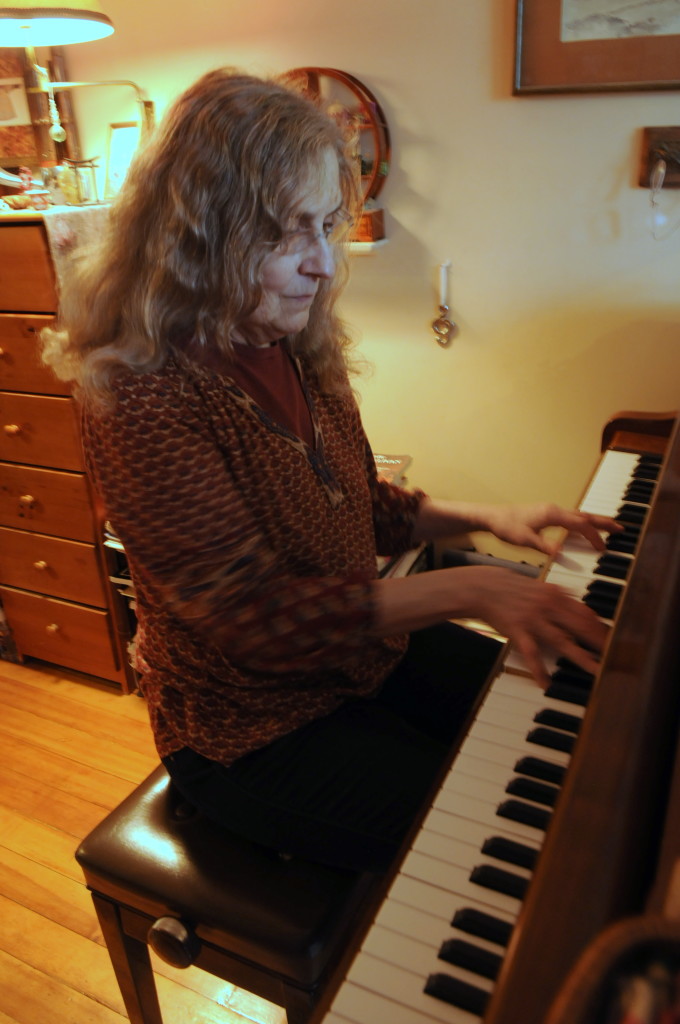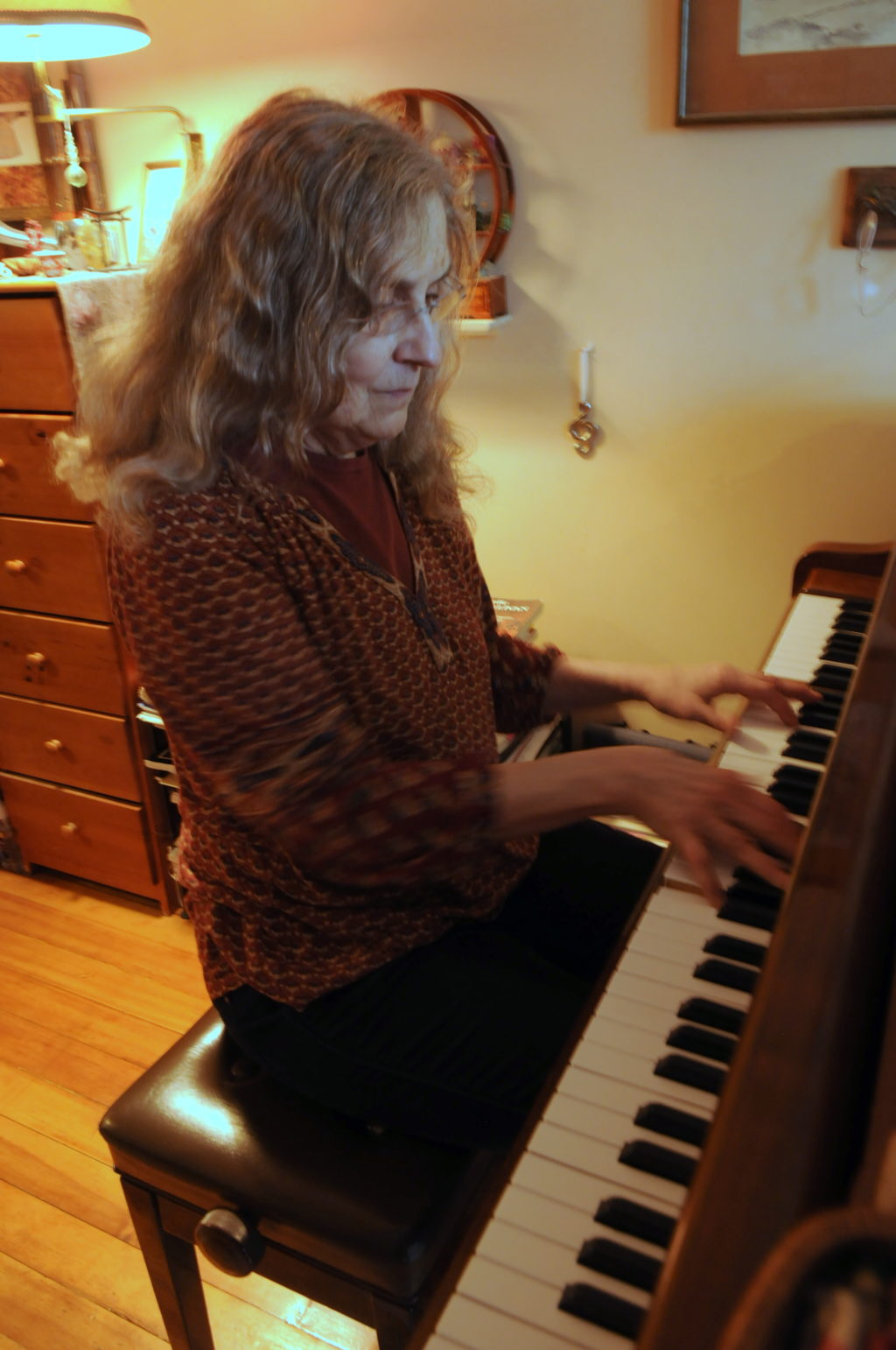
Nancy Nash is heading to Point Hope and Kivalina next week to help revive historical chants through the Episcopal Church. (Jillian Rogers)
Haines resident Nancy Nash is traveling around the high Arctic next week to share her passion for music, or, more specifically, chanting.
Over the next week or so, Nash will trade her rain boots for a parka, and local salmon for muktuk, or whale blubber. She’s heading to Point Hope, 300 miles above the Arctic Circle, and Kivalina, tiny Inupiat villages in Alaska’s Far North. The temperature there recently has been hovering around zero degrees, not too cold for the Arctic. Last week, Nash warmed up her vocal chords while taking a break from her trip preparations.
“Singing and music and chanting has always been a part of everyone’s life, from the beginning,” she says after giving a sample chant.
Nash is the music coordinator for the Alaska Episcopal diocese, which includes 50 parishes from Ketchikan to Point Lay. She’s making the trek north to help revive some very old chants with the parishioners there.
In October, Nash attended a state-wide gathering of the diocese and sang part of a chant for the group.
“And near the end of the convention, an Elder from the church in Point Hope and she sang in my ear and asked ‘Is this what you just sang?’”
It was a little different, Nash says, but she mentioned to the woman that she wanted to find out more. That’s when she was invited to Point Hope to sing with the locals.
“And I will be taking all the research I’ve done about what could be the chants that they know from the original mission.”
Nash says the Episcopal mission in Point Hope was the second in Alaska. A missionary traveled there in 1890 and taught the locals four-part settings using scripture passages. Through some online investigating, Nash found the 1892 hymnal used there.
“And I can’t believe it, but here in 2016 now, there are people that have passed down those settings and still remember them. I’m going to, I hope, assist in reviving those,” Nash says. “This is an unparalleled chance to be in Point Hope, which is the longest continually lived-in place in both the Americas and I’ll be singing with them and bringing the latest in the modern church and hoping to hear the four-part harmonies sung in those chants that go way back.”
After Point Hope, Nash will travel to Kivalina, a small island community in the Chukchi Sea. Kivalina has gained attention in recent years because it is literally falling into the ocean thanks to coastal erosion. Faith is strong in Kivalina, and Nash says she’s looking forward to spending a few days there at a gathering of the Arctic Coast Deanery, a subgroup of the Episcopal Church.
“And so the other thing I’ll be doing in both Point Hope and Kivalina is I’ll be helping the guitarists – they both have very good guitarists. And so I’ve done settings for our very best hymns, the ones that are the most singable and have the best text.”
Nash worked on translating some of the chants into the Inupiaq language with help of a translated prayer book from 1925, something that wouldn’t have even been possible 20 years ago, before the inception of accessible internet. She spelled out the long words phonetically to help her, showing off her work at her kitchen table.
Nash says hearing the chants in Inupiaq will be one of most exciting parts of the trip.
It’ll take a couple of days to get there – she has to fly to Juneau, Anchorage, Kotzebue, Nome and then on to the smaller villages. She says she’s hoping to see and do as much as she can on her short trip. She’s even made arrangements to teach a Zumba class at the school in Point Hope.
“It’s more enriching for me because I just feel so strongly about the importance of music and chanting in our wellbeing.”
Historical chants and songs have been lost over the decades, Nash says, and she’s hoping that her visit will help bring them back.









